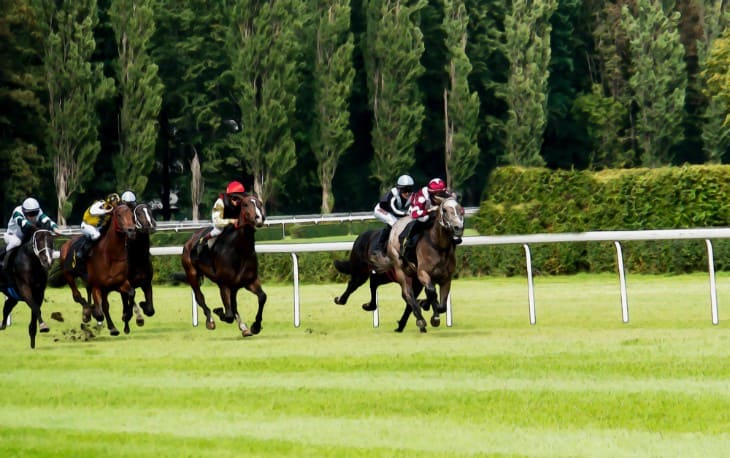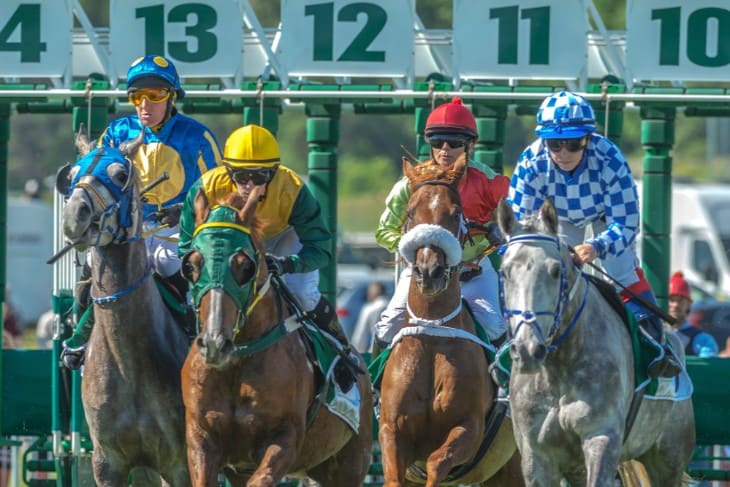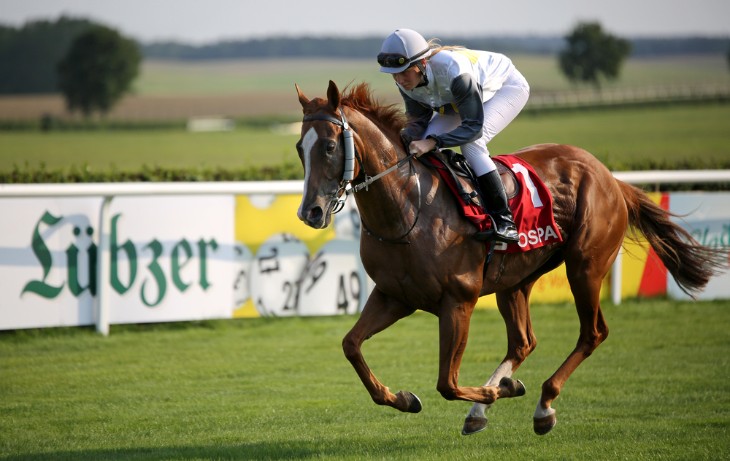- The Purpose of Essential Gear
- Riding Helmets and Their Importance
- Body Protectors: Safeguarding the Jockey
- The Role of Riding Boots
- Jockey Breeches: Function and Design
- Gloves for Jockeys: Grip and Control
- Whip Selection and Regulations
- Saddle Essentials: A Comfortable Ride
- Bridles and Bits: Communication with the Horse
- Racing Silks: Identifying the Jockey
- Medical Supplies for Jockeys
- Maintaining and Replacing Gear
- Conclusion
The Purpose of Essential Gear
Riding a horse at high speeds presents inherent risks, making safety a paramount concern for jockeys. One of the core pieces of equipment addressing this concern is the riding helmet. These helmets are meticulously designed to provide protection to the head in the event of a fall or collision. Crafted from durable materials, they are rigorously tested to meet strict safety standards. The design includes a hard outer shell to absorb impact and a padded interior to cushion the head. Jockeys wear these helmets to reduce the risk of head injuries, such as concussions, while ensuring they can continue their careers unharmed.
Additionally, body protectors play a pivotal role in jockey safety. These specially designed vests are constructed to absorb and distribute impact, shielding the rider from potential harm. They are lightweight and flexible, allowing for ease of movement during races. Body protectors, often made with a combination of foam and hard plastic, provide an extra layer of defense against injuries to the chest and torso. In the unpredictable environment of horse racing, where falls are not uncommon, these protective vests are indispensable, affording jockeys a sense of security as they navigate the racecourse. Thus, the purpose of essential gear in horse racing extends beyond performance enhancement; it is a matter of safety and well-being.
Riding Helmets and Their Importance
The design of riding helmets is a testament to their role in safeguarding jockeys. They are typically made from lightweight yet robust materials such as fiberglass or carbon fiber, ensuring that they provide optimal protection without compromising the rider's comfort or agility. These materials possess the necessary strength to withstand the impact forces that can occur during a fall or collision on the racecourse. Inside the helmet, a layer of shock-absorbing foam further enhances safety by dissipating and minimizing the force transferred to the rider's head. The construction of these helmets adheres to stringent safety standards, and they are regularly subjected to rigorous testing to ensure they meet or exceed these standards.
The importance of riding helmets cannot be overstated when it comes to injury prevention. Head injuries can have serious and long-lasting consequences, making helmets an essential piece of equipment for jockeys. Even minor head injuries can have a profound impact on a jockey's career and overall well-being. Therefore, the use of riding helmets is not just a matter of tradition or preference; it is a non-negotiable safety measure that contributes to the continued success and health of jockeys in the UK horse racing industry.
Body Protectors: Safeguarding the Jockey
Body protectors, sometimes referred to as 'flak jackets,' are designed with one primary objective: to protect the jockey's upper body from the risk of injury. These protective vests are constructed from multiple layers of foam and high-density materials, forming a flexible yet robust barrier. The key to their effectiveness lies in the ability to disperse and absorb impact energy. In the event of a fall or collision, the body protector spreads the force over a larger surface area, reducing the risk of localized injuries, such as broken ribs or sternum fractures.
Jockeys benefit from the tailored fit of body protectors, which ensures minimal interference with their movement while providing maximum protection. The close-fitting design allows for unimpeded riding posture and flexibility, crucial for maintaining control of the horse during a race. The combination of comfort and safety makes body protectors an essential piece of gear for jockeys participating in UK horse racing, where the unpredictable nature of the sport demands unwavering focus and dedication to safety.

The Role of Riding Boots
Riding boots are meticulously designed to meet the unique demands of horse racing. They typically feature a slim and sleek profile with a low heel, which serves several important purposes. Firstly, the slim profile reduces the risk of getting caught in stirrups, enhancing the jockey's safety during a race. Secondly, the low heel ensures a secure and comfortable fit in the stirrups, allowing for precise control of the horse. The construction of these boots often includes high-quality leather, known for its durability and ability to withstand the rigors of daily training and racing.
Another critical feature of riding boots is their ability to provide excellent grip on the stirrups. The soles of these boots are designed with specific patterns or materials to enhance traction. This grip is indispensable during races when jockeys must maintain balance and control while urging their mounts to peak performance. Moreover, riding boots offer protection to the jockey's feet and ankles in the event of a fall or collision. This added safeguard helps prevent injuries that could sideline a jockey, highlighting the significance of these boots in the world of UK horse racing.
Jockey Breeches: Function and Design
The design of jockey breeches prioritizes comfort and performance. They are typically made from a combination of stretchy and breathable materials, such as Lycra or spandex. This blend of fabrics allows for a snug yet flexible fit, crucial for jockeys who need to move with the horse's rhythm during a race. The close-fitting nature of jockey breeches also reduces friction between the rider's legs and the saddle, minimizing the risk of chafing or discomfort during prolonged rides.
An essential feature of jockey breeches is the full-seat or knee-patch grip. This provides the rider with added stability and control in the saddle. The grip material is strategically placed in areas that come into contact with the saddle, enhancing the rider's ability to stay securely seated, even during the most intense moments of a race. Additionally, jockey breeches are designed to be lightweight to prevent overheating and to wick away moisture, keeping the rider dry and comfortable. Their streamlined appearance, often seen in a range of vibrant colors, also serves a practical purpose by identifying jockeys in the heat of the race. In the competitive world of UK horse racing, where every detail matters, jockey breeches are a vital component of a jockey's gear, contributing to their success on the track.
Gloves for Jockeys: Grip and Control
Jockey gloves are designed with the dual purpose of improving grip and protecting the rider's hands. They often feature a synthetic or leather palm with specialized grip-enhancing materials strategically placed in key areas. This design ensures that jockeys maintain a firm hold on the reins, even in wet or challenging conditions. The ability to maintain a consistent grip is crucial for communicating with the horse and guiding it effectively during a race.
Moreover, jockey gloves offer protection against friction and abrasion. The constant contact between the rider's hands and the reins can lead to discomfort and potential blisters without proper hand protection. The gloves serve as a barrier, reducing the risk of injuries that could impede a jockey's performance. Additionally, they contribute to a jockey's overall comfort and control, enabling them to focus on the race's strategy rather than dealing with the discomfort of raw or injured hands. In the competitive realm of UK horse racing, where races can be decided by fractions of a second, jockey gloves play an instrumental role in achieving victory.
Whip Selection and Regulations
Whips used by jockeys are specifically designed for horse racing, balancing the need for communication with the horse and adherence to strict regulations. These whips are typically shorter and lighter than those used in other equestrian disciplines, ensuring they are easy to handle during a race. The handle of the whip is often wrapped with a comfortable grip to provide jockeys with better control during the race.
However, it's important to note that the use of whips in UK horse racing is governed by strict regulations. There are limits to the number of times a jockey can use the whip in a race, and there are rules regarding the force with which it can be applied. These regulations are in place to ensure the welfare of the horse and to maintain the integrity of the sport. Jockeys are well aware of these rules and the importance of adhering to them. The selection of a whip, therefore, is not just about its design and functionality but also about its compliance with the established guidelines. It is a delicate balance between using the whip as a tool for encouragement and maintaining the welfare of the horse.
Saddle Essentials: A Comfortable Ride
Racing saddles are purpose-built for speed and agility. They are designed to be lightweight, providing minimal obstruction to the horse's movements while maintaining a secure fit. The design often features a low-profile seat and minimal padding, allowing the jockey to feel the horse's movements and make precise adjustments during a race. The saddle's lightweight construction contributes to the horse's overall agility, which is crucial for maintaining a competitive edge on the track.
One of the defining characteristics of racing saddles is the absence of a horn, which is commonly found on Western saddles. This absence allows for a greater range of motion for the jockey's body, especially during moments that demand quick and precise adjustments. Racing saddles also incorporate strategically placed knee rolls and thigh blocks to provide jockeys with added stability and security while riding at high speeds. The ergonomic design of these saddles ensures that jockeys can maintain their balance and control, even during the most intense moments of a race. Therefore, the choice of a racing saddle is a critical decision for jockeys in the UK horse racing circuit, as it directly impacts their performance and the horse's comfort.
Bridles and Bits: Communication with the Horse
Bridles are the headgear that allows jockeys to direct and control the horse. They consist of various components, including a headstall, cheekpieces, reins, and the essential bit. The bit is a crucial element of the bridle, as it sits in the horse's mouth and enables the jockey to convey instructions. Bits come in various styles and materials, each designed to achieve different levels of control and responsiveness from the horse. The choice of bit is a matter of careful consideration, as it directly impacts the horse's comfort and responsiveness. Jockeys must select a bit that suits both their horse's temperament and the specific demands of the race.
Additionally, reins attached to the bridle provide the jockey with a direct connection to the horse's mouth, allowing for precise control of speed and direction. The skillful use of reins and the bit is a hallmark of an accomplished jockey. Effective communication through bridles and bits is essential for guiding the horse through the intricacies of the racecourse and achieving peak performance. In the competitive world of UK horse racing, where fractions of a second can determine victory, the relationship between jockey and horse, facilitated by these essential gear components, is a critical factor in achieving success.
Racing Silks: Identifying the Jockey
Racing silks, also known as racing colours or jockey silks, are distinctive and flamboyant outfits worn by jockeys during races. Each set of racing silks is unique and is registered to a specific owner, helping spectators and officials identify both the jockey and the horse during a race. These silks feature bold and eye-catching designs, often incorporating bright colours, patterns, and symbols that represent the owner or stable. The vibrant nature of racing silks adds an element of spectacle to UK horse racing, allowing fans to easily distinguish their favourite jockeys and horses in the midst of the action.
Beyond their visual appeal, racing silks also play a functional role. They are designed to be lightweight and aerodynamic, reducing wind resistance during a race. The form-fitting nature of the silks ensures that they do not impede the jockey's movements or create drag, thus contributing to improved performance. While racing silks are a celebration of individuality and tradition in the sport, they also underscore the importance of identification and recognition in the fast-paced world of UK horse racing.

Medical Supplies for Jockeys
Medical supplies for jockeys encompass a range of items, including first-aid kits, injury treatment tools, and protective gear. First-aid kits carried by jockeys often contain bandages, antiseptic solutions, and wound dressings to address minor injuries that may occur during races or training. These kits are easily accessible, typically attached to the saddle or the jockey's clothing for quick use when needed.
Maintaining and Replacing Gear
Regular maintenance of gear is essential to extend its lifespan and preserve its functionality. Jockeys and their support teams must regularly inspect and clean equipment like riding helmets, body protectors, and riding boots. Cleaning helps to remove dirt and sweat that can accumulate during races and training sessions, which, if left unattended, can lead to the deterioration of materials. Moreover, gear should be checked for any signs of damage, such as cracks, loose stitching, or wear and tear. Identifying and addressing these issues promptly is crucial to prevent potential safety hazards during races.
Riding helmets, for instance, should be inspected for any visible damage to the outer shell or interior padding. Body protectors should be examined for any signs of compression or damage to the protective foam layers. Riding boots should have their soles and stitching assessed for wear and tear. It is essential that any gear showing signs of wear or damage be promptly repaired or replaced to maintain its integrity and safety standards.
The replacement of gear is an inevitable aspect of a jockey's career. Over time, even the highest-quality equipment will reach the end of its effective lifespan due to wear and the rigorous demands of racing. When it becomes evident that a piece of gear can no longer guarantee safety or functionality, it must be replaced. This decision should be made with the utmost consideration for safety, as compromised gear can pose serious risks to the jockey's well-being. The replacement process involves careful selection of new gear that meets safety standards and is tailored to the jockey's specific needs. In the competitive world of UK horse racing, where split-second decisions can determine victory, maintaining and replacing gear is a critical aspect of a jockey's career.
Conclusion
In the fast-paced and highly competitive world of UK horse racing, the gear worn by jockeys serves as the cornerstone of their success and safety. From riding helmets that protect their heads to racing silks that identify them on the track, each piece of equipment plays a vital role in the jockey's performance. Safety, comfort, and functionality are paramount concerns, and the gear is meticulously designed and maintained to meet these standards.
For more information:








